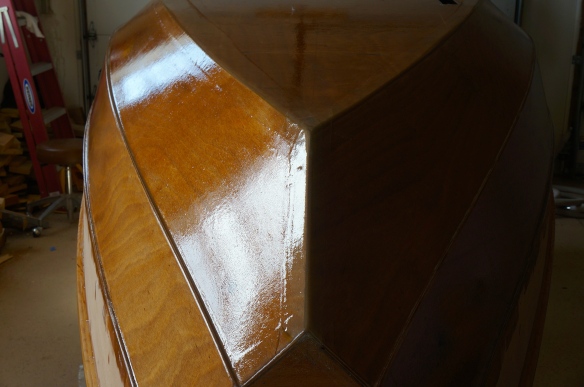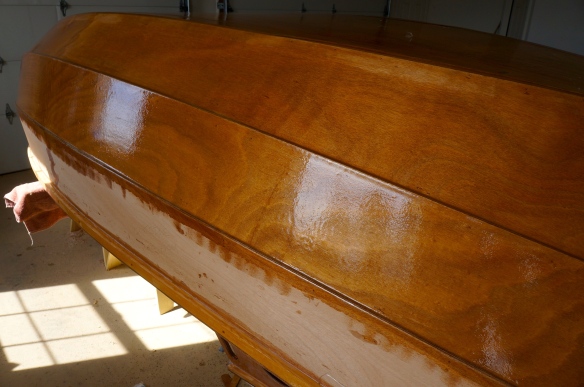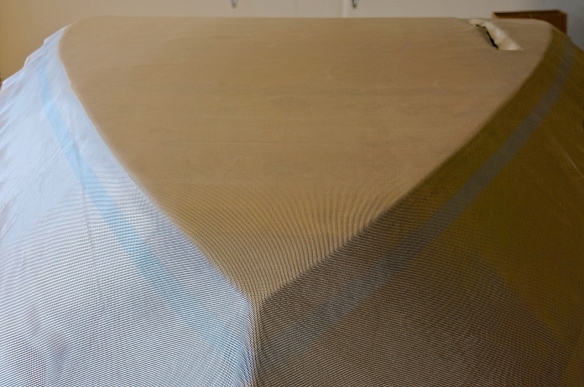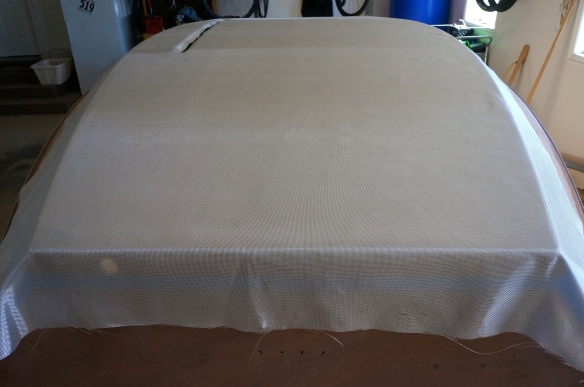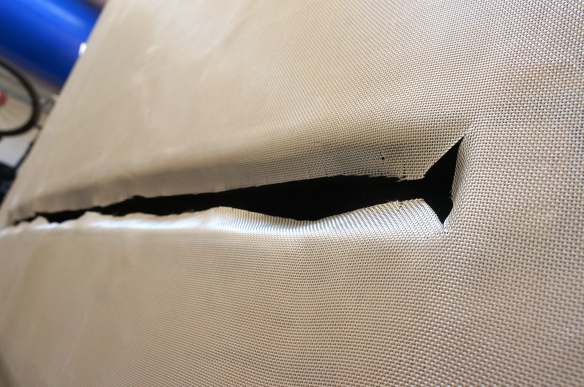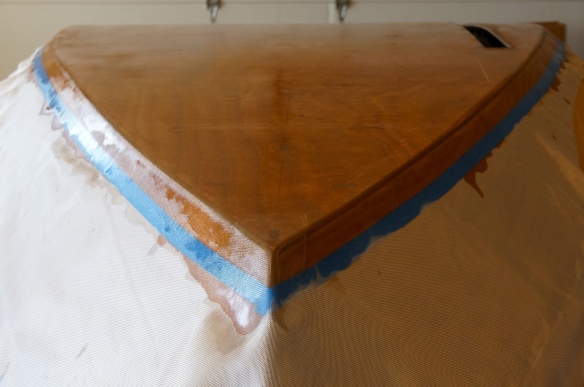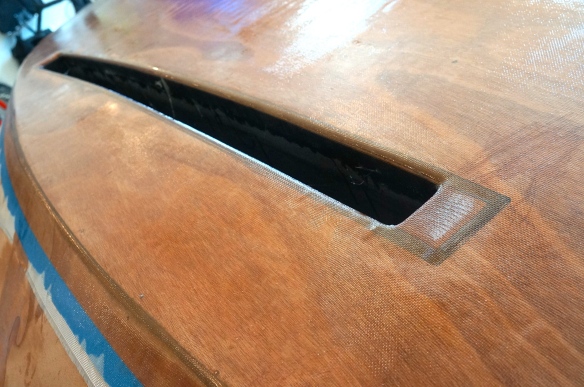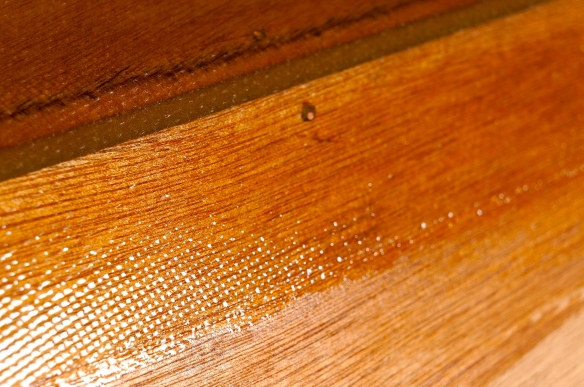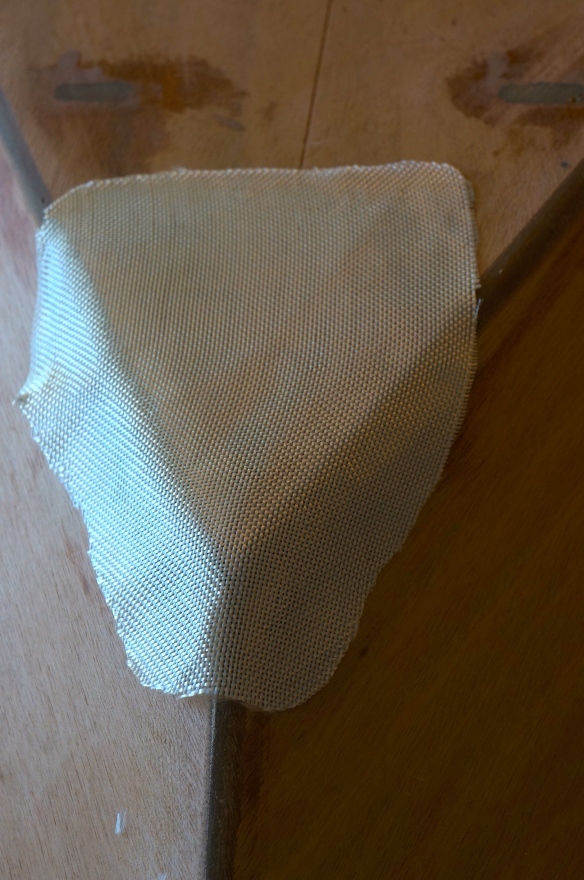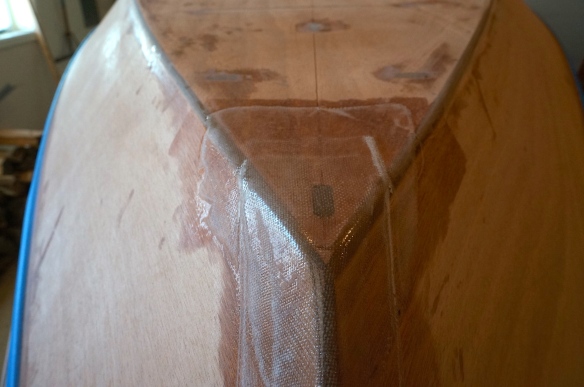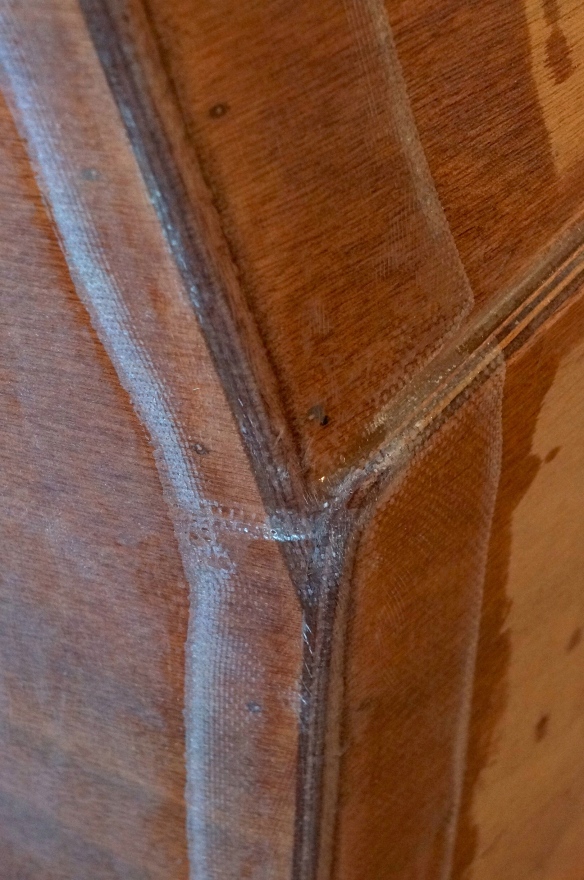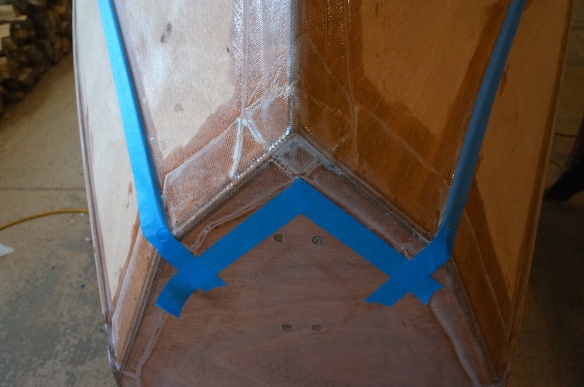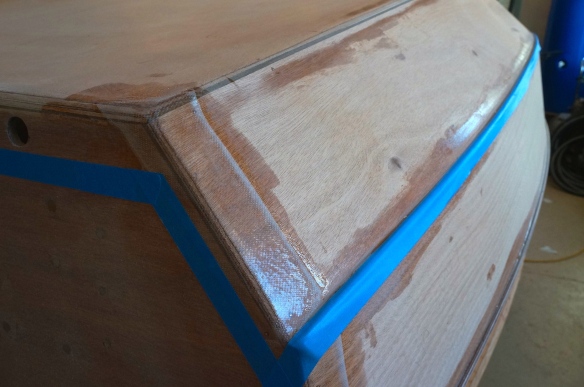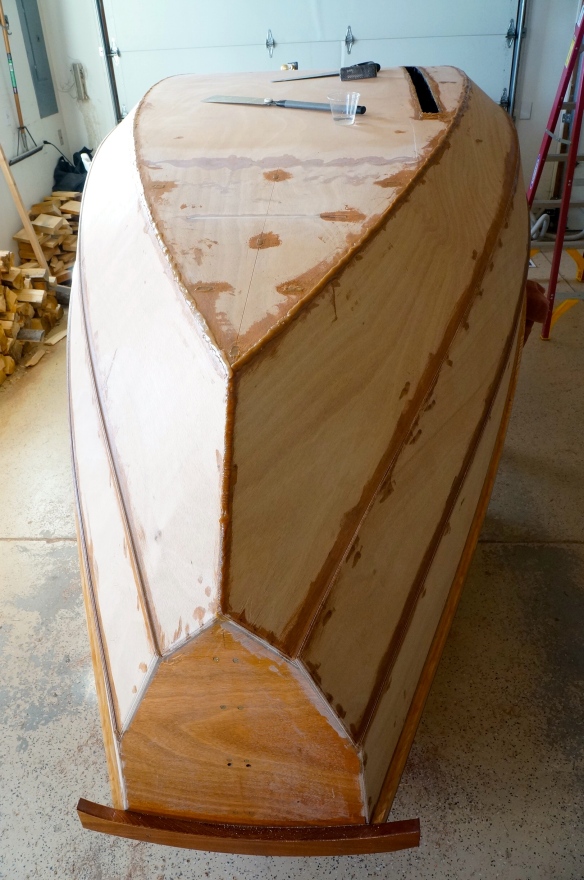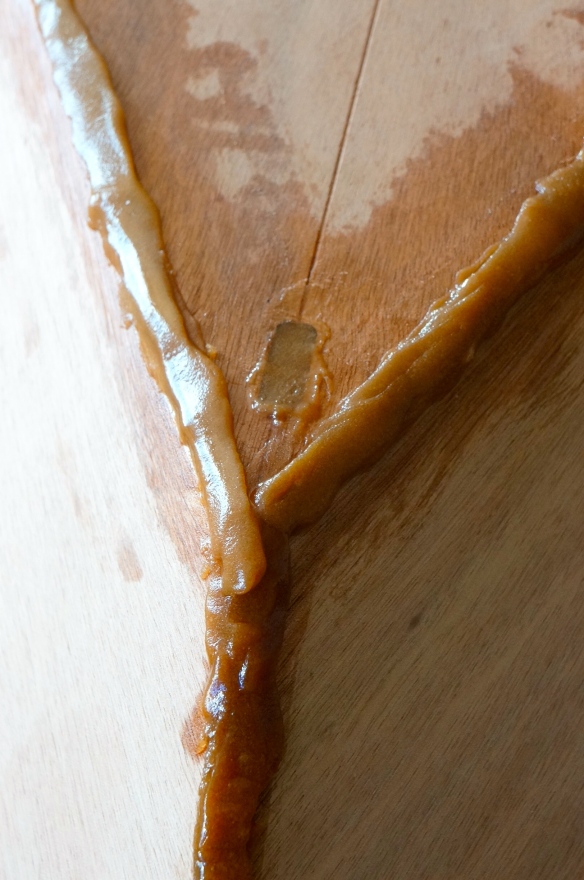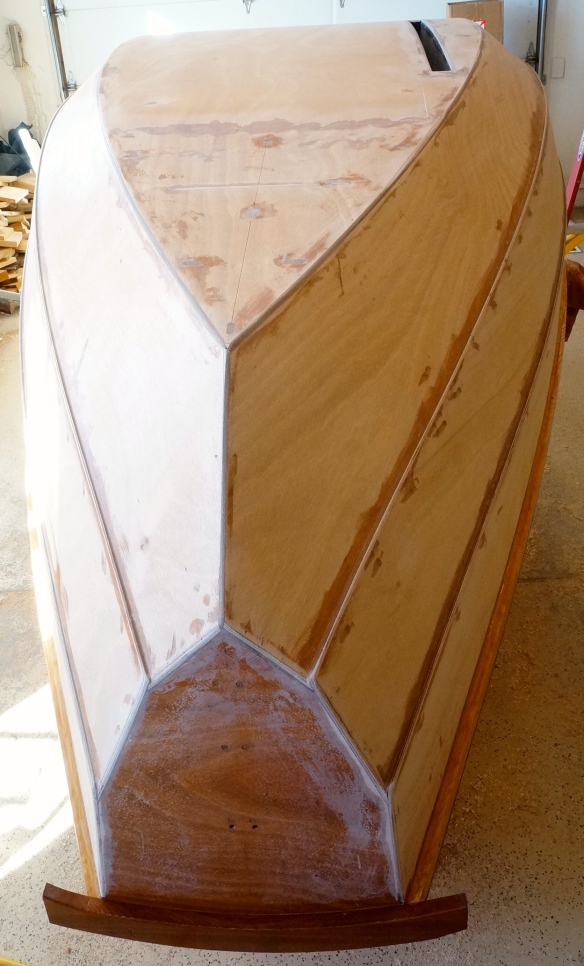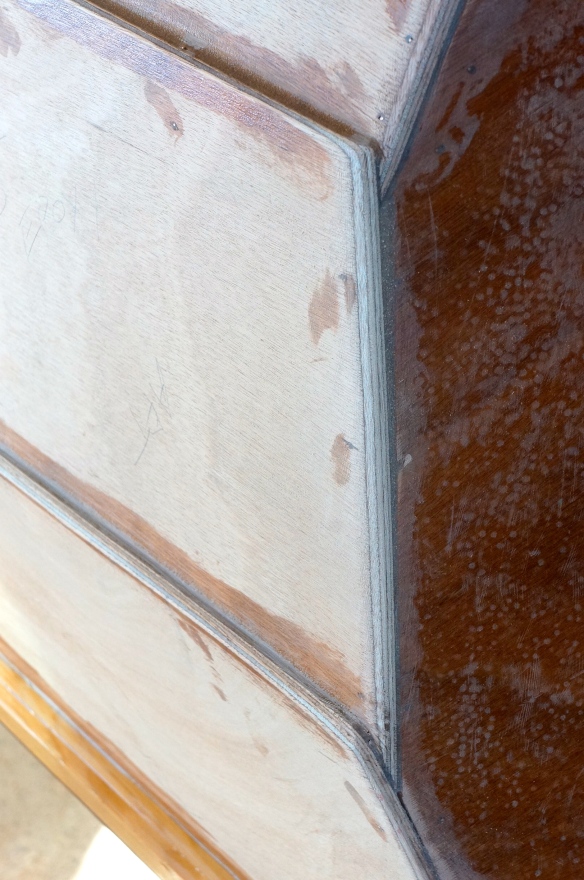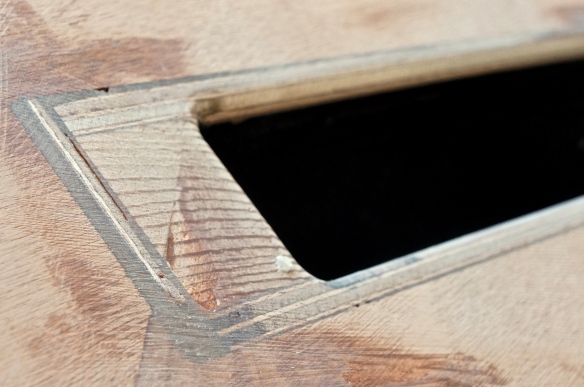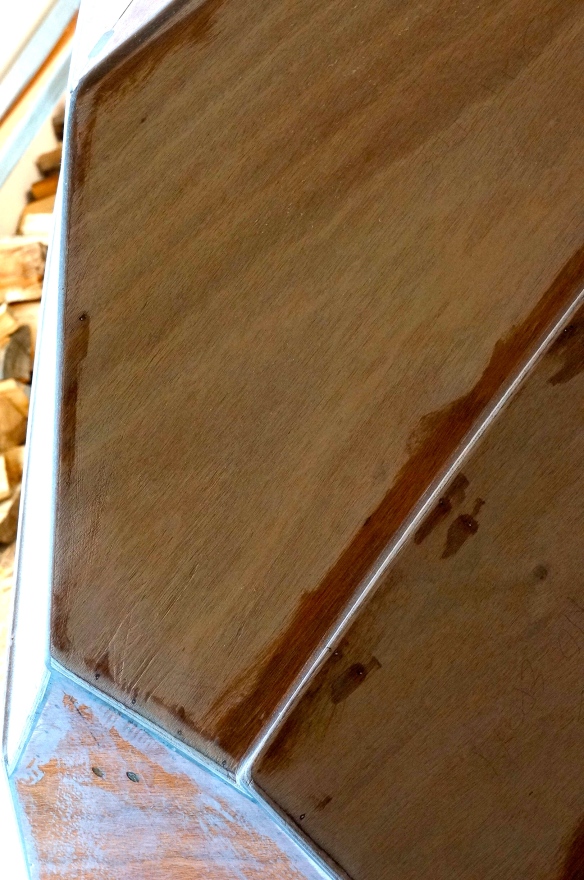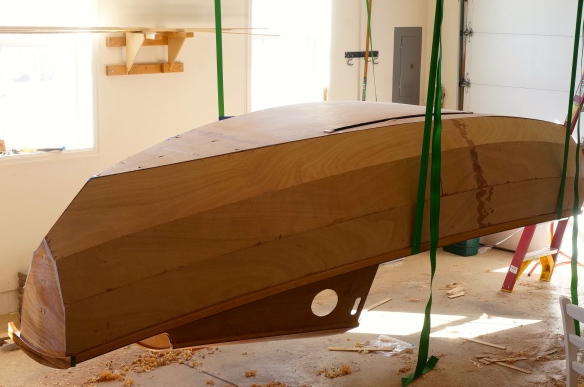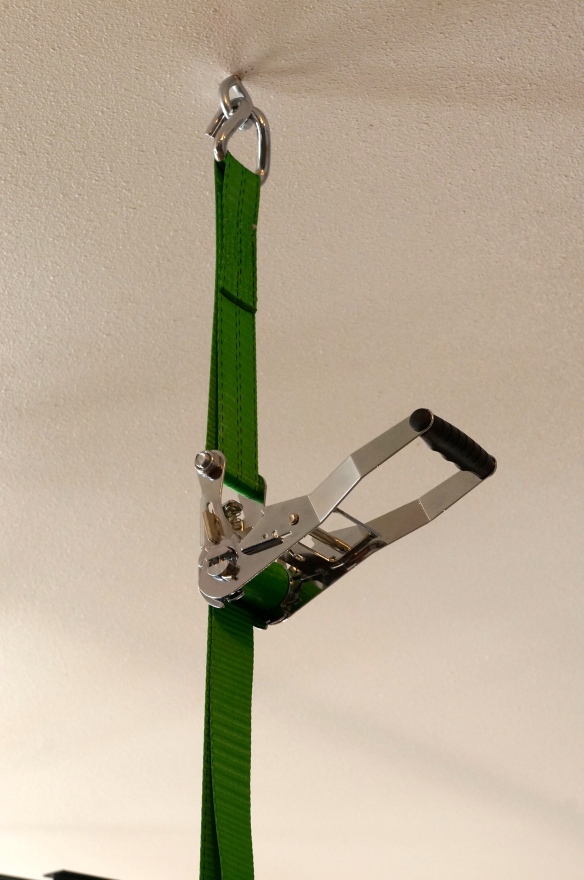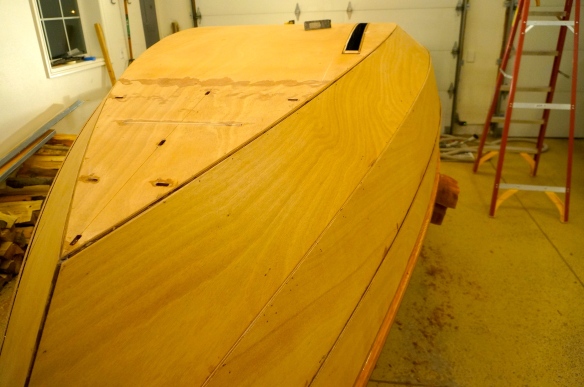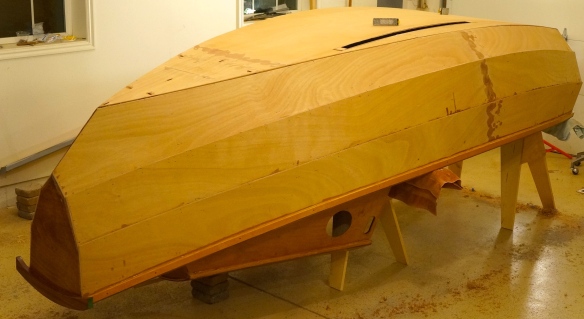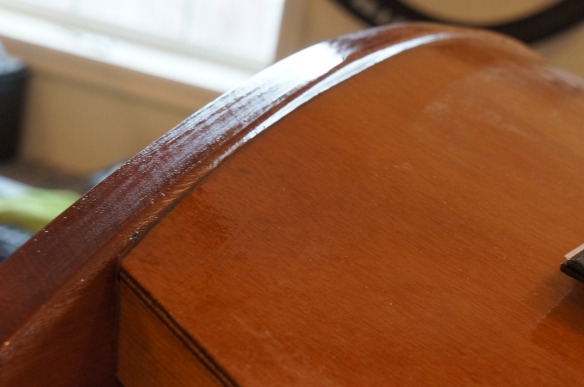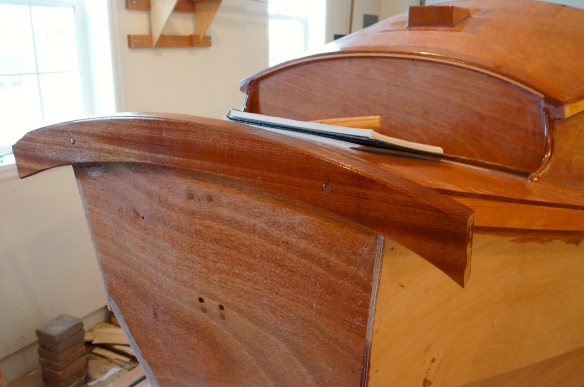While waiting for more epoxy to arrive, I set my sights on the skegs. It’s funny how some steps in this build seem to weigh more heavily on my mind than others. The skegs have always been a bit bothersome to me.
Let me count the ways:
- The bottom skeg curve needs to match the boat hull (on each side…they are different)
- The top skeg curve needs to match the opposite skeg (for equal resistance and proper stance)
- The skegs need to be glued on exactly parallel to each other (or my boat will be doing the snow plow through the water)
- The skegs need to be glued on 90 degrees off the hull (or my boat will want to roll off center)
No Pressure…
But, I had no epoxy…so the only thing to do was move forward with the skegs. 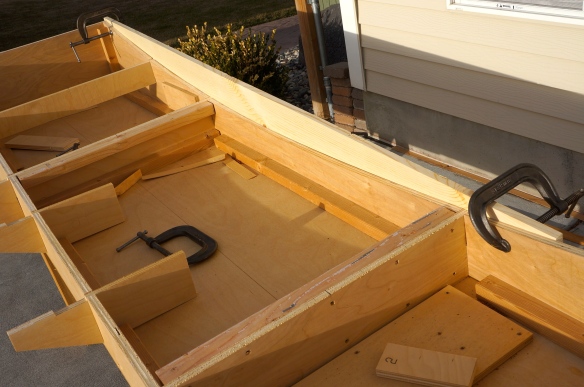 I started by clamping a pattern piece (1 x 10 x 8 pine) against the jig. This seemed like an effective ‘ham n egger’ way to trace the proper bottom curve of the skeg.
I started by clamping a pattern piece (1 x 10 x 8 pine) against the jig. This seemed like an effective ‘ham n egger’ way to trace the proper bottom curve of the skeg.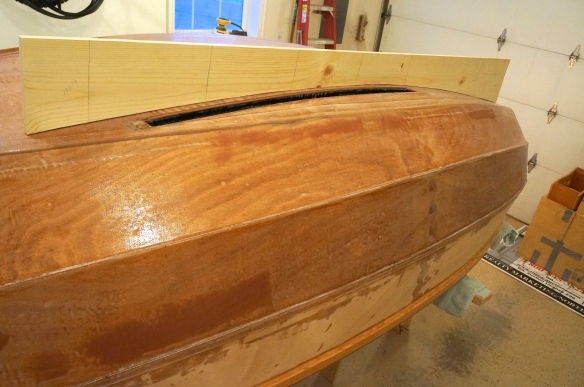 I then began to fine tune this pattern piece to fit the hull. I notice right away, that both sides of the hull are a little different…so one pattern did not fit both sides. I chose to build the starboard skeg first, then reshaped the pattern a bit to fit the port side.
I then began to fine tune this pattern piece to fit the hull. I notice right away, that both sides of the hull are a little different…so one pattern did not fit both sides. I chose to build the starboard skeg first, then reshaped the pattern a bit to fit the port side.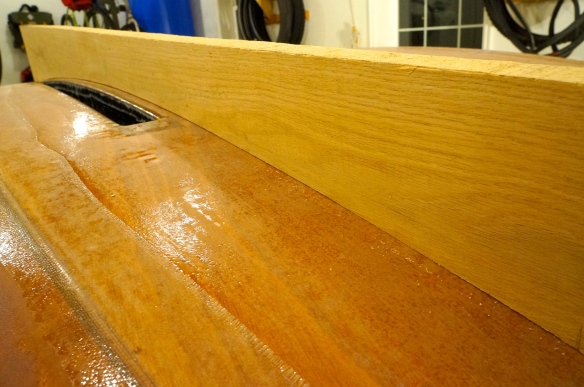 I then traced this pattern onto a red oak plank (8″ x 1,1/2″ x 8′).
I then traced this pattern onto a red oak plank (8″ x 1,1/2″ x 8′).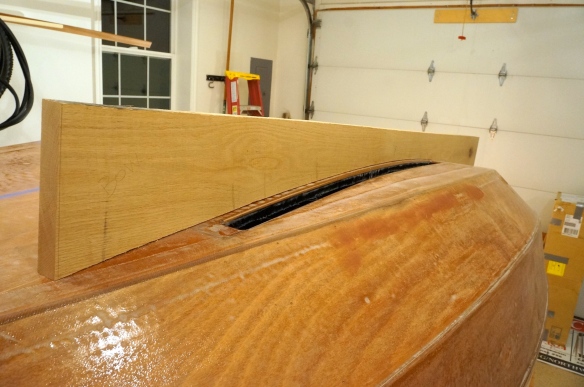 After some work (correction, after a fair amount of work) the bottom curve snuggled closely to the hull. I chose not to cut the top curve until I had the hull curve correct. This left me with plenty of wood to work with for proper height of the skeg.
After some work (correction, after a fair amount of work) the bottom curve snuggled closely to the hull. I chose not to cut the top curve until I had the hull curve correct. This left me with plenty of wood to work with for proper height of the skeg.
This is one of those things that you look at several times before deciding it is good enough. Then, you look at it some more and continue working on it. After several iterations of this loop, you finally decide you’re done. After transposing the offsets from the plans to the skeg plank, I used my jig saw to cut the shapely side of the skeg. This piece was entirely too big for me to handle on my band saw, so the jig saw was commandeered into service.
After transposing the offsets from the plans to the skeg plank, I used my jig saw to cut the shapely side of the skeg. This piece was entirely too big for me to handle on my band saw, so the jig saw was commandeered into service.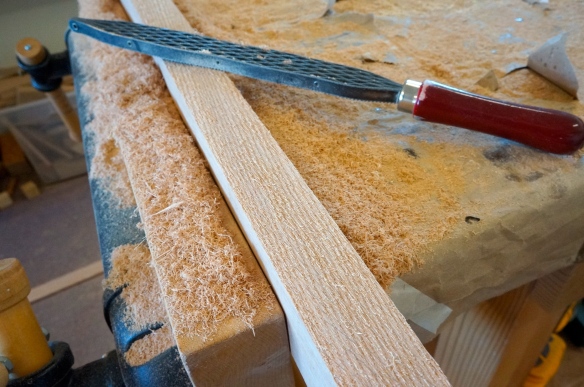 Well, as you know, a jig saw will not cut a 90 degree angle from the board face. Instead it gets pushed around a bit, especially when cutting 6/4 hardwood. I turned to the Shinto rasp to file the cut surface flat and smooth out the wows.
Well, as you know, a jig saw will not cut a 90 degree angle from the board face. Instead it gets pushed around a bit, especially when cutting 6/4 hardwood. I turned to the Shinto rasp to file the cut surface flat and smooth out the wows. 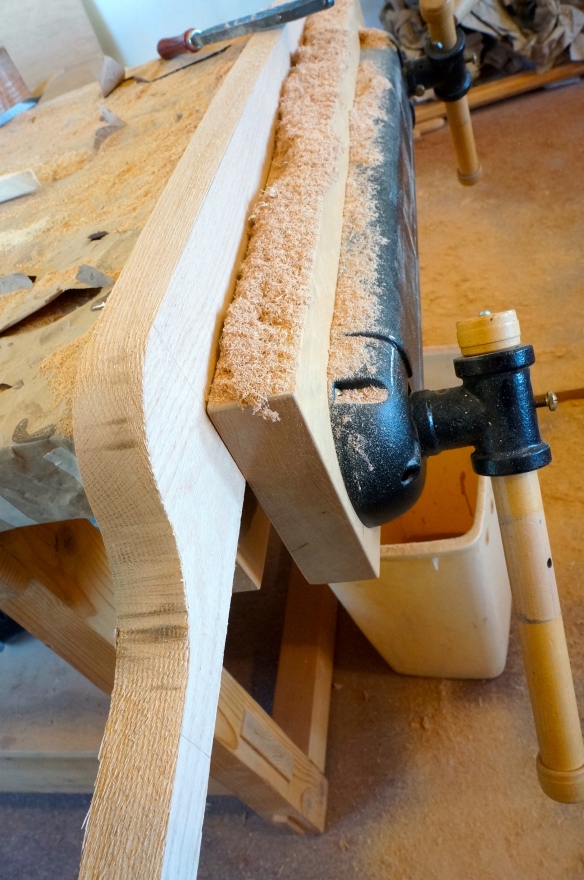
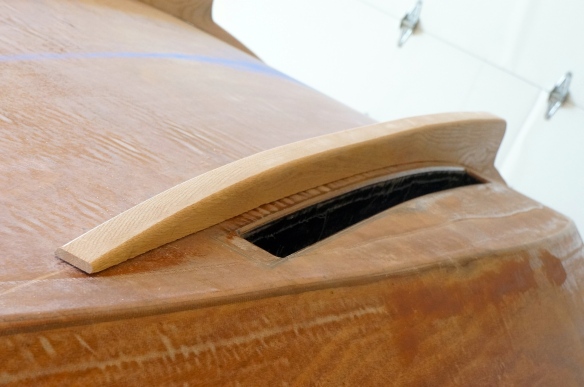 I then ran a 1/4″ rounder bit on all edges. The front edge will be epoxied and faired after installation to the hull. I did create a much more gradual ramp than shown in the plans for easier trailer loading.
I then ran a 1/4″ rounder bit on all edges. The front edge will be epoxied and faired after installation to the hull. I did create a much more gradual ramp than shown in the plans for easier trailer loading.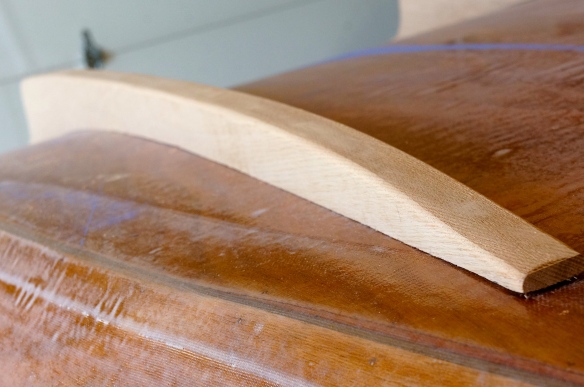
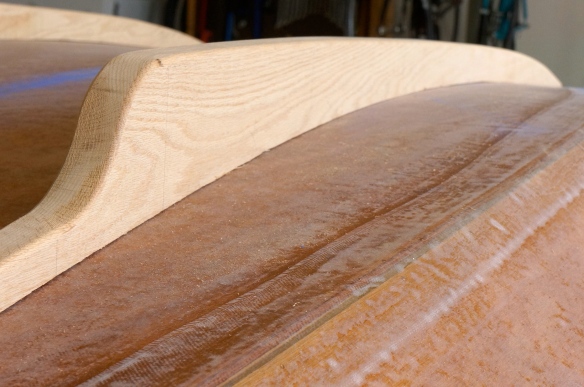
 I’m very satisfied with the results. I can now breath a sigh of relief and wait for the epoxy to arrive.
I’m very satisfied with the results. I can now breath a sigh of relief and wait for the epoxy to arrive.

